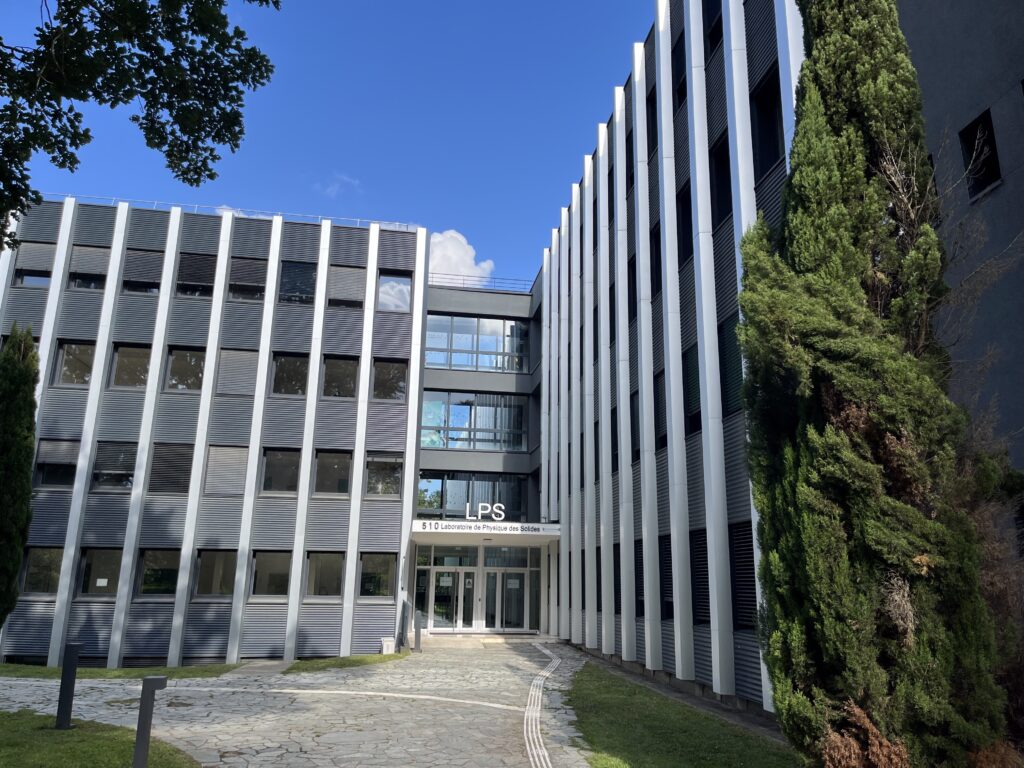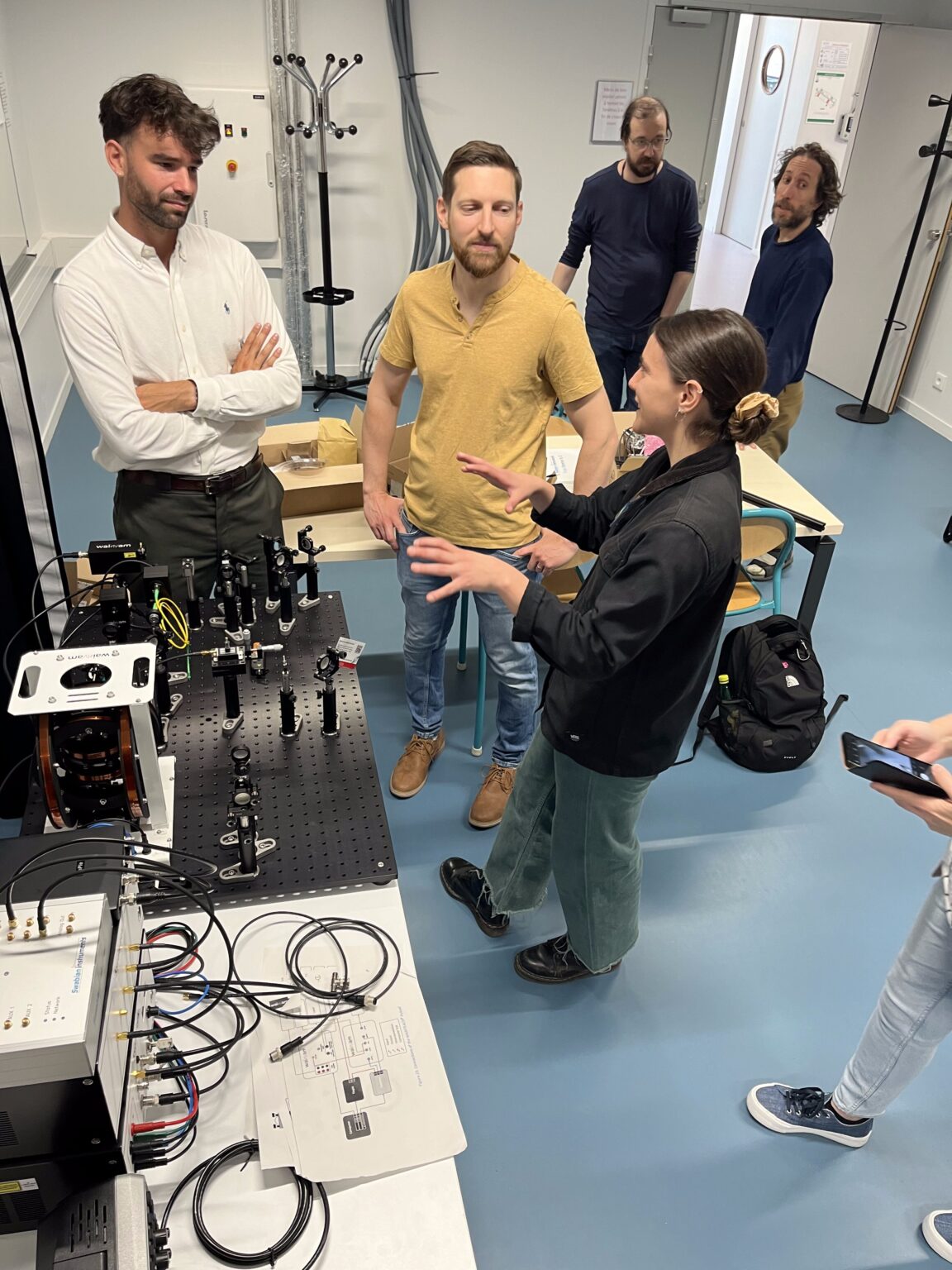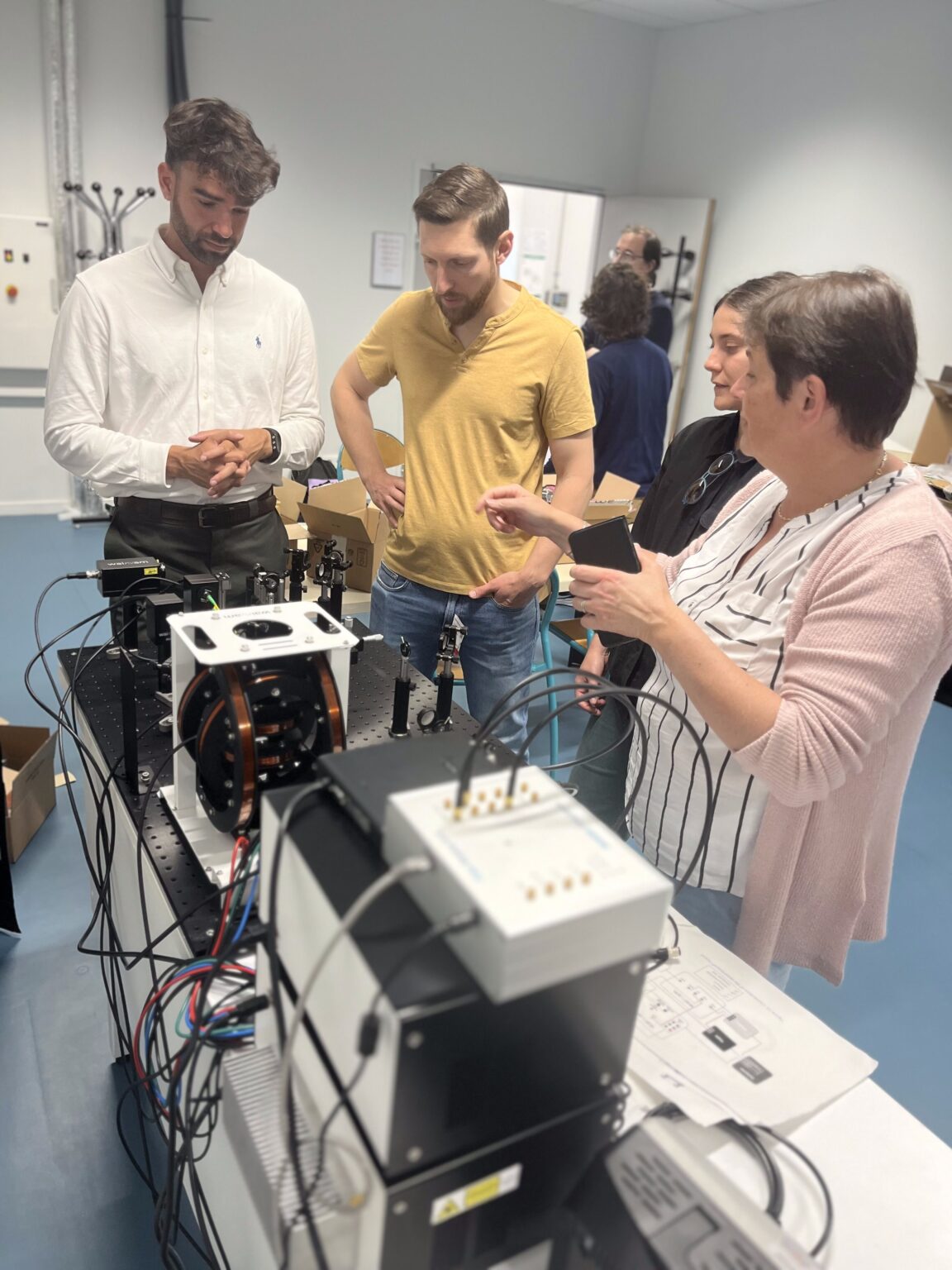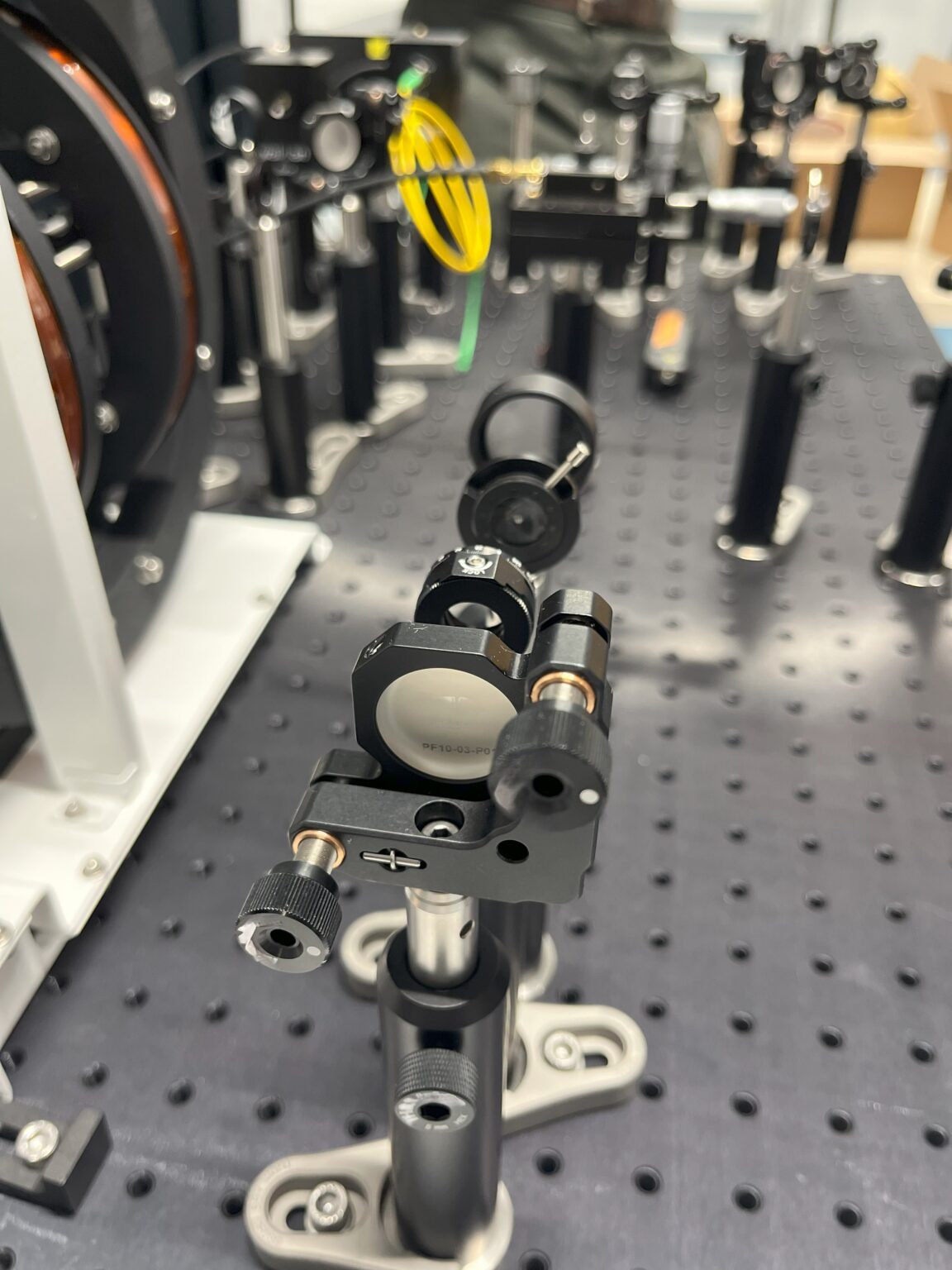
KWANTEACH, designed for teaching quantum physics
The University of Paris-Saclay and the KWANTEACH system
University of Paris-Saclay – Solid State Physics Laboratory
University Team :
– Miguel Monteverde, Senior Lecturer, Qubit project
– Edwin Kermarrec, Senior Lecturer, in charge of the Physical Measurement Platform and Quantum Practical Work for L3 and M1 students
– Kyriaki SAMIOTI, PhD student, specialising in NV Centres, Assembly and Teaching with KWANTEACH
Environment
The University of Paris-Saclay, renowned for its excellence in research and teaching, was looking to strengthen its capabilities in the field of quantum physics education.


In particular, Miguel Monteverde and Edwin Kermarrec ‘s team was tasked with developing new practical work (TP) for L3 and M1 students, to make learning about quantum physics more concrete and interactive. Kyriaki SAMIOTI, a PhD student, was focusing on NV centres and was looking for a practical, didactic tool for his research and teaching work.
Challenge
The teaching and education of quantum physics presents unique challenges, not least the complexity of the concepts and the difficulty of illustrating them in a tangible way. The tools available on the market, which are often closed, function like simulators and do not allow students to manipulate or experiment directly, limit their practical understanding. The university needed a solution that would “show in a concrete way”.
Solution: KWANTEACH
KWANTEACH, a solution designed and manufactured in France by KWAN-TEK, was presented to the University of Paris-Saclay team. This system perfectly met the needs identified:
- French design: a guarantee of quality and professional reactivity and support.
- Suitable for training students from undergraduate to PhD level: KWANTEACH provides a concrete and practical application of quantum concepts.
- Wide range of educational applications: Allows students to be trained in optical manipulation, good handling practices, basic physics concepts such as magnetic resonance, fine and hyperfine interactions in atoms or more complex problems such as the Zeeman effect, Rabi oscillations and Ramsey fringes.

- Empirical experiment: Enables experimental physics to be carried out at room temperature. Its open, hands-on concept means you can touch it, align it, make mistakes – in short, you can carry out very interesting experiments with a robust, simple product that makes learning more concrete.
- Open, contributory teaching tool: Unlike competing closed products, KWANTEACH is an open manipulation tool that lets you see and understand processes in real time.
Testimonials and feedback
Feedback from the university team has been extremely positive. Here are a few testimonials :
- Miguel Monteverde: “KWANTEACH is a product designed for research and teaching, allowing concrete and practical use. Given the complexity of NV centres, it is crucial to have a visible, mature and interesting offering for TP that lasts over time.”
- Edwin Kermarrec: “Easy to use, it works at room temperature and allows different materials to be manipulated. The best way to learn is by making mistakes. With KWANTEACH, students can derange the product, understand their mistakes, and correct them themselves.”
- Kyriaki SAMIOTI: “It’s a very good experiment, very practical for understanding quantum physics. One of the strengths of the KWANTEACH is that you can see the beam passing through, which makes it more understandable and didactic.”
Testimonials and feedback
Feedback from the university team has been extremely positive. Here are a few testimonials :
- Miguel Monteverde: “KWANTEACH is a product designed for research and teaching, allowing concrete and practical use. Given the complexity of NV centres, it is crucial to have a visible, mature and interesting offering for TP that lasts over time.”
- Edwin Kermarrec: “Easy to use, it works at room temperature and allows different materials to be manipulated. The best way to learn is by making mistakes. With KWANTEACH, students can derange the product, understand their mistakes, and correct them themselves.”

Impact
Since the introduction of KWANTEACH, the University of Paris-Saclay has observed several notable benefits :
- Improved student engagement: Students are more involved thanks to the ability to manipulate the tools directly
- .Increased understanding: Visualising processes in real time has made it easier to learn the complex concepts of quantum physics.
- Flexibility and autonomy: Teachers and researchers can adapt and personalise the practical exercises to suit their specific needs, thereby enhancing the quality of teaching.

The integration of KWANTEACH at the Université de Paris-Saclay has transformed the approach to teaching and research in quantum physics. By offering an intuitive, open and sustainable solution, KWAN-TEK has enabled the university to overcome the challenges of teaching complex concepts and foster an interactive and practical learning environment. KWANTEACH continues to play a crucial role in the education of the next generation of quantum physicists, proving the value of home-grown innovation, thought and designed for academic excellence.
KWAN-TEK develops and markets metrology solutions based on a disruptive technology: diamond quantum sensors. We offer a range of sensitive and stable instruments for various industrial and research applications. Our technology is based on the optical interrogation of a particular defect in diamond, which allows us to measure magnetic fields with high accuracy


